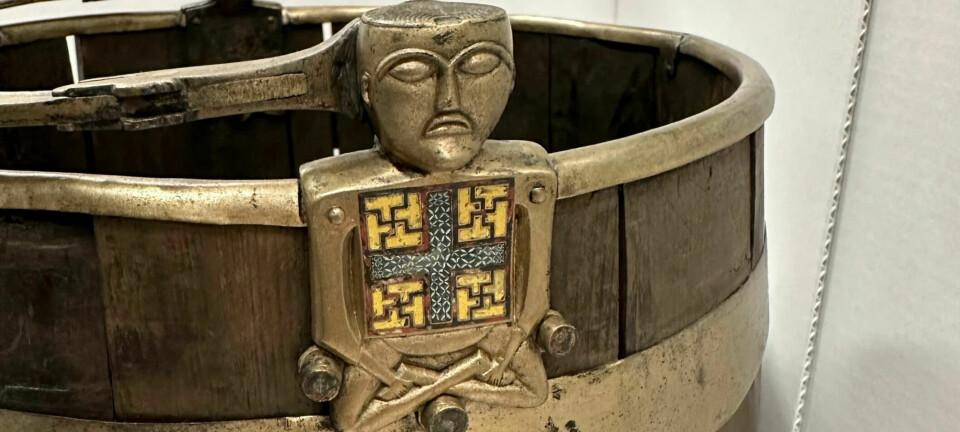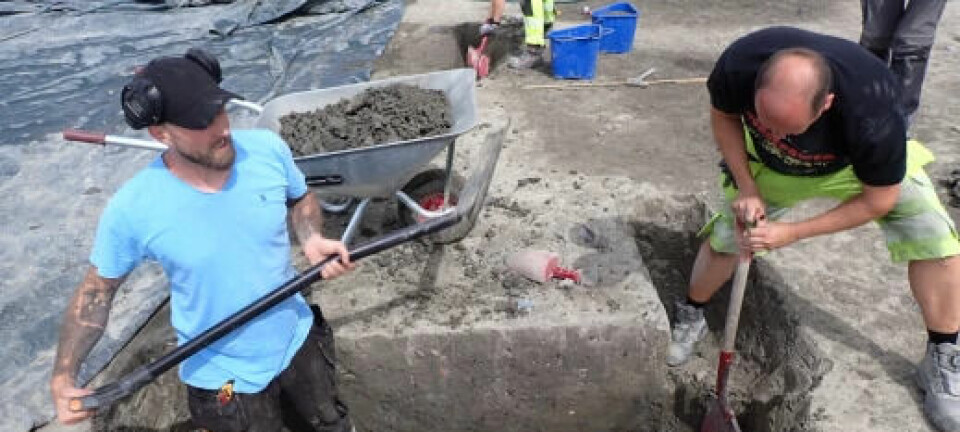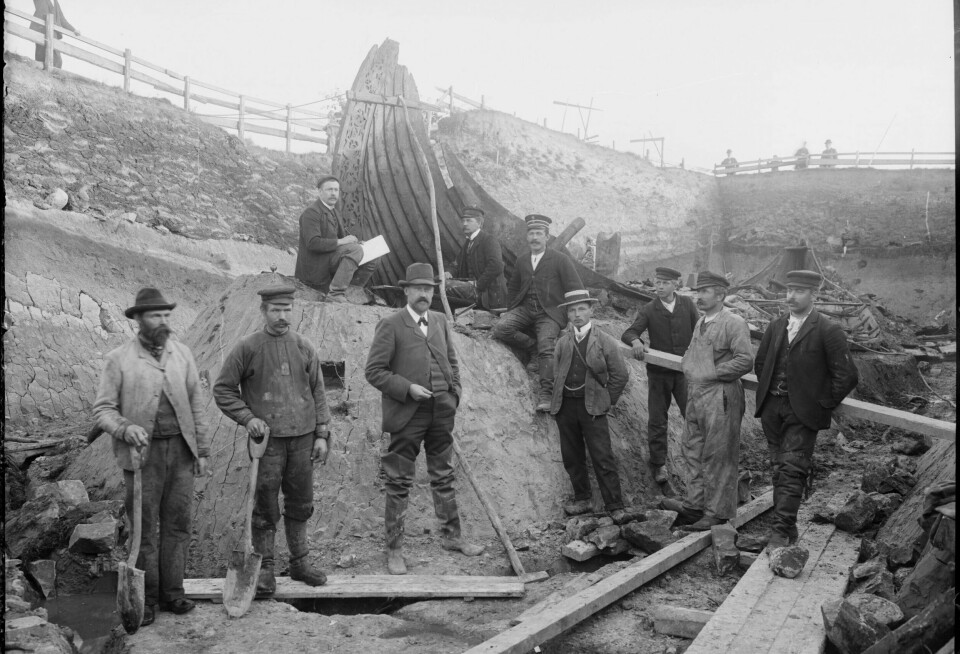
The Oseberg ship took a mystery with it to the grave.
Before the Vikings sealed the burial mound where the ship lay, strange things happened.
The ship's deck and the valuable objects on it were crushed by tens of tonnes of stone.
Dead animals were thrown onto the ship.
Why on earth did the Vikings do this?
The Oseberg Viking ship is still shrouded in mystery
In addition to being crushed, the ship was moored. Despite being on land.
“Imagine the scene when 15 horses were beheaded,” archaeologist Hanne Lovise Aannestad tells sciencenorway.no.
The carcasses of the horses and several other animals were thrown onto the foredeck of the Oseberg ship during the burial. Then the burial mound was sealed again.
This is just one of many traces of rituals associated with the Oseberg find. Aannestad is an archaeologist at the Museum of Cultural History and specialises in the burial chamber of the Oseberg ship.
The Oseberg find is perhaps the most magnificent Viking ship discovery that will ever be unearthed, according to Aannestad. It was excavated in 1904 outside Tønsberg in eastern Norway, and both the ship and the finds were transported to Norway’s capital Oslo.
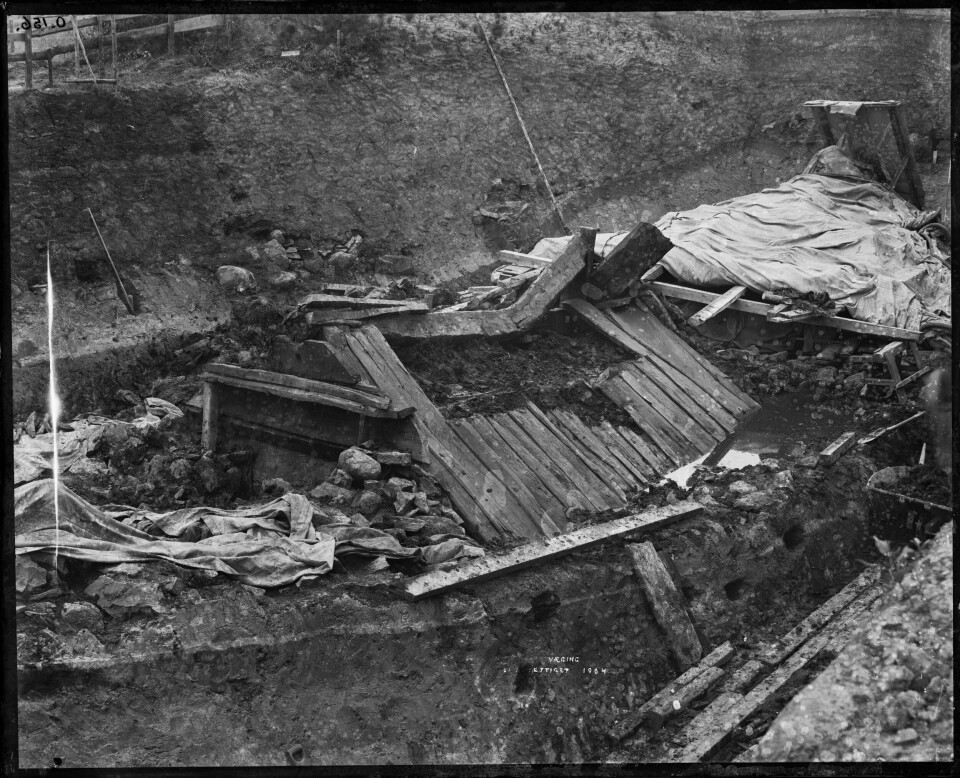
Before the ship was sealed inside the mound, nearly 180 tonnes of stone were transported and placed around and thrown on top of the ship. The stone was moved several hundred metres, requiring significant effort.
“The stone is distinct from the surrounding soil masses. It must have been placed on top of the ship,” Aannestad says.
On the foredeck, there were treasures that the dead were to be buried with. When the many tonnes of stone hit the ship, the deck was crushed.
The valuable objects were found squeezed between the large stones.
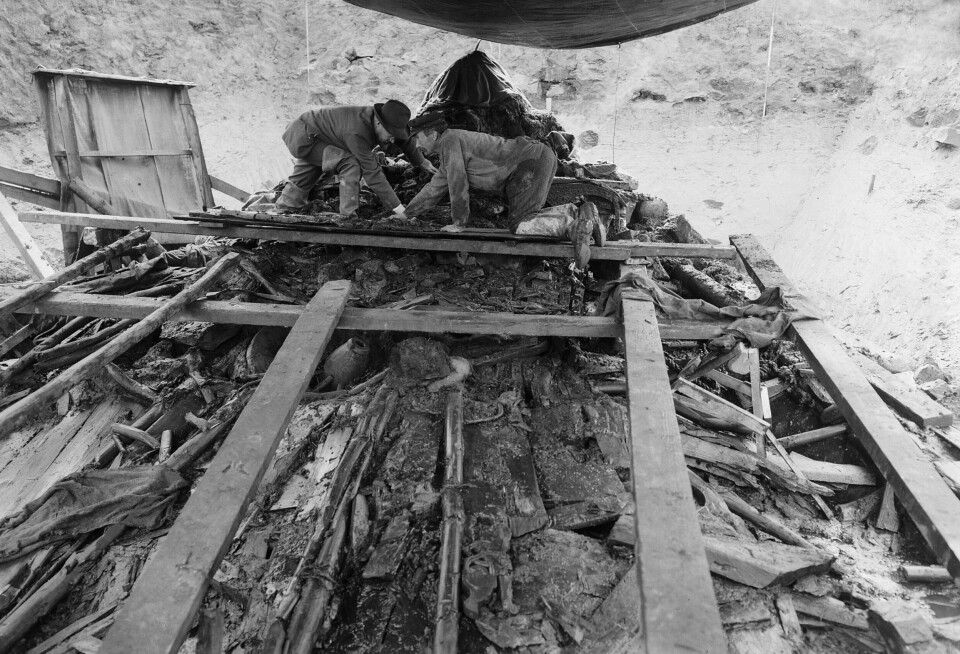
In 1917, archeology professor A. W. Brøgger described the stone-throwing as follows:
... how these stones were brutally thrown onto wagon, sleds, and beds, how they were stacked against the ship’s stems, filling them up and destroying valuable items without any consideration for their value.
The stone pile inside the ship puzzles archaeologists.
“It’s unique to Oseberg. We don’t see this in other ship burials,” Jan Bill tells sciencenorway.no. He is professor of Viking Age archaeology and a specialist in Viking ships at the Museum of Cultural History.
This feature has not been found in other known ship burials such as the Gokstad ship or the Tune ship.
Who was in the grave?
Over time, the weight of the masses and stones in the burial mound contributed to further damaging the items and the ship.
In the early 1900s, both the ship and several of the valuable items were repaired and reconstructed before being exhibited.
Famous items like the Oseberg wagon and the sleds, covered in intricate wood carvings, come from this grave. They were meant to exude power and status.
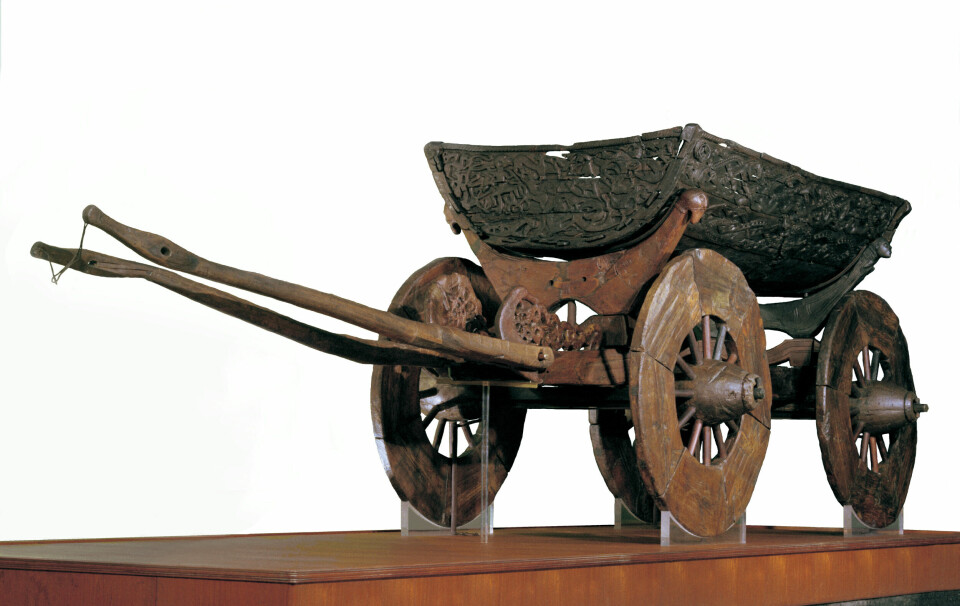
The grave belonged to two women. They were laid in a tent-shaped burial chamber on top of the ship's deck, but today no one knows who they were.
Grave robbers entered and disturbed the burial chamber relatively soon after the burial mound was created, so some of the history might be lost forever, Aannestad says.
The ship is dated to have been built around the year 820, and the grave is from around 834, according to the Great Norwegian Encyclopedia.
But why are the stones there?
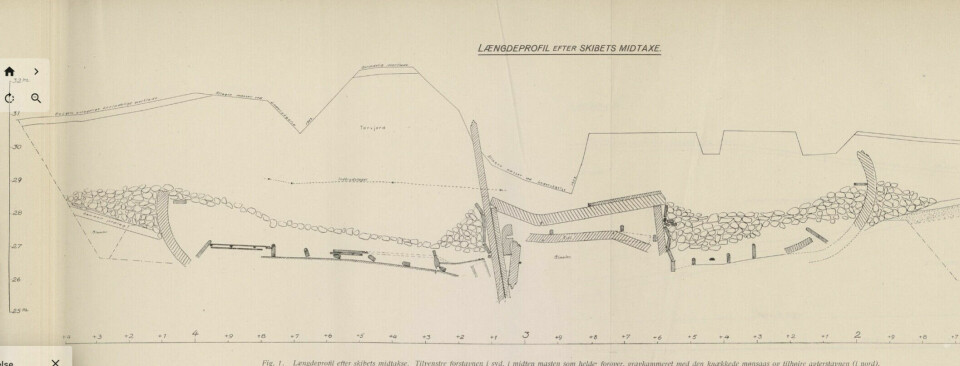
Ritual destruction?
Archaeologists believe that the stones are part of a burial ritual that took place before the burial mound was sealed.
“The significance of the stones and the destruction is uncertain,” Aannestad says.
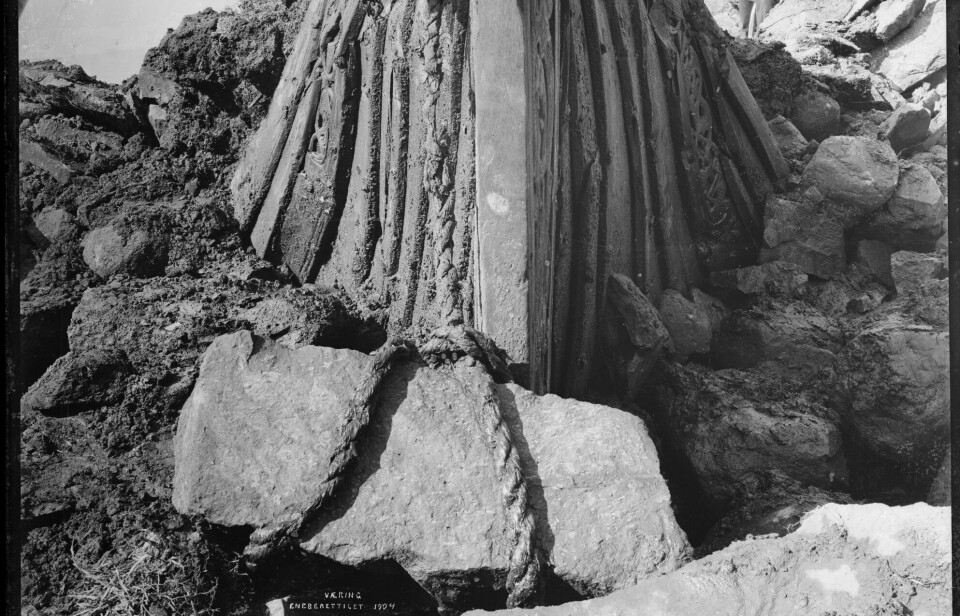
Some of the stones were placed around the stern, the rear part of the ship.
The ship itself was tethered with a large and thick hawser – a mooring rope – to a huge boulder.
This part of the Oseberg ship was covered first, leaving the bow protruding from the mound.
Most viewed
Is it possible to find out why the stones are there? And what were the Vikings who conducted the burial trying to express?
“It almost seems paradoxical,” Aannestad says. “A ship can be interpreted as a means of travel, at the same time as it is completely anchored by all this stone and the mooring.”
She points out that the stone links the ship to the mound and a world beneath the ground.
“But we don't really know what they envisioned,” she says.
Perhaps the ship was seen as a vessel to transport the dead. Then, one possible interpretation is that the items in the mound also had to ‘die’ to accompany them, Aannestad explains.
“At the same time, there were probably beliefs that the dead could live inside the mound. Sagas mention that they ‘make noise in the mound’ and that someone has to go inside to calm them,” she says.
Down to the underworld?
The ship can be seen as a way to transport the deceased to the underworld, according to archaeology professor Jan Bill.
The physical ship was to remain in the burial mound, but some more intangible elements of both the items in the mound and the person's soul may have been free to continue their journey.

The physical objects could facilitate the journey, Jan Bill describes in a 2016 article about the Oseberg find. One way to understand the stones is as a kind of reverse ballast – that is, weight added to a ship to make it more stable on water.
If the stones had been placed on the ship while it was in the water, the ship and everything on board would have sunk to the bottom. If the Norse underworld, called Hel, is understood to lie below the ground, then perhaps all the stones could help make the downward journey easier.
This is just one possible interpretation, and Bill mentions other interpretations in the article.
Does not need to be logical
Evidence of other ritualistic actions, like the ship being moored in the grave, has been found.
“What’s important to remember is that it doesn’t have to be logically connected,” Jan Bill tells sciencenorway.no.
The rituals performed during the Oseberg burial were not documented anywhere, leaving archaeologists to piece together the story from the remnants.
“These are rituals they have carried out, and they created a monument that keeps the story of that burial alive,” Bill says.
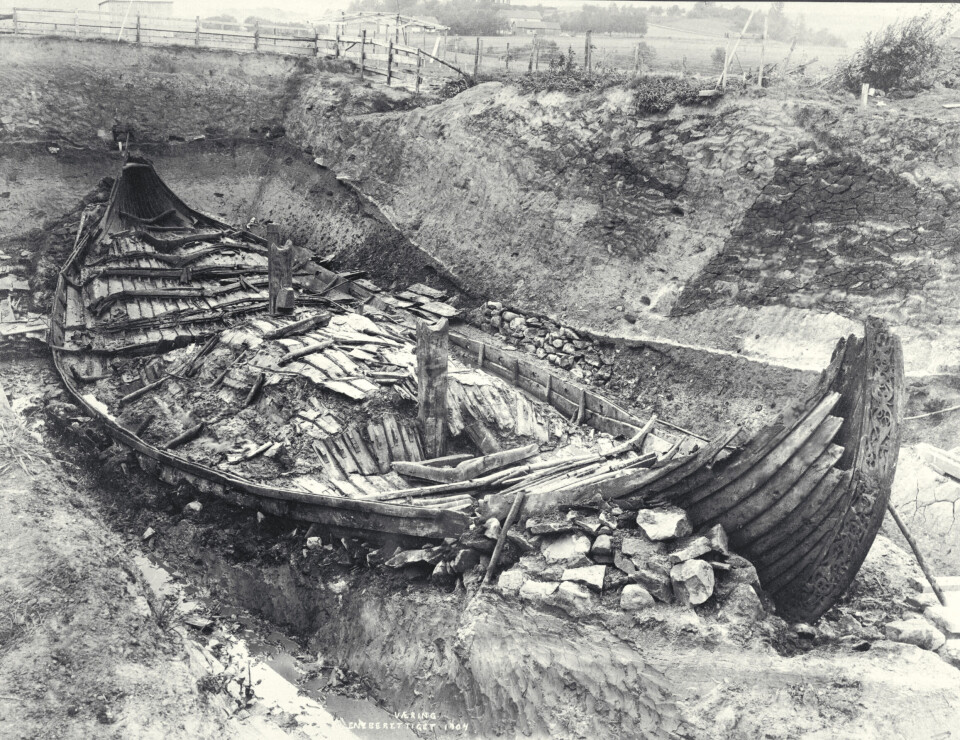
“There’s something we don’t understand”
The Vikings' traditions varied greatly. Different rituals characterise graves from the Viking Age, according to the researchers sciencenorway.no has spoken with. There are examples of many different traditions in Viking graves from the same period in Scandinavia.
In some graves, items have been destroyed.
“There are some traces of ritualistic destructions,” Hanne Lovise Aannestad says. “There are graves with cremated remains where weapons are visibly damaged, swords are bent, and the edges of axes are blunted.”
Cremation graves are common from the Viking Age in Norway. These are graves where the deceased has been cremated, according to the Great Norwegian Encyclopedia (link in Norwegian).
But there are also many examples where the grave offerings have not been destroyed. And many different types of grave markers.
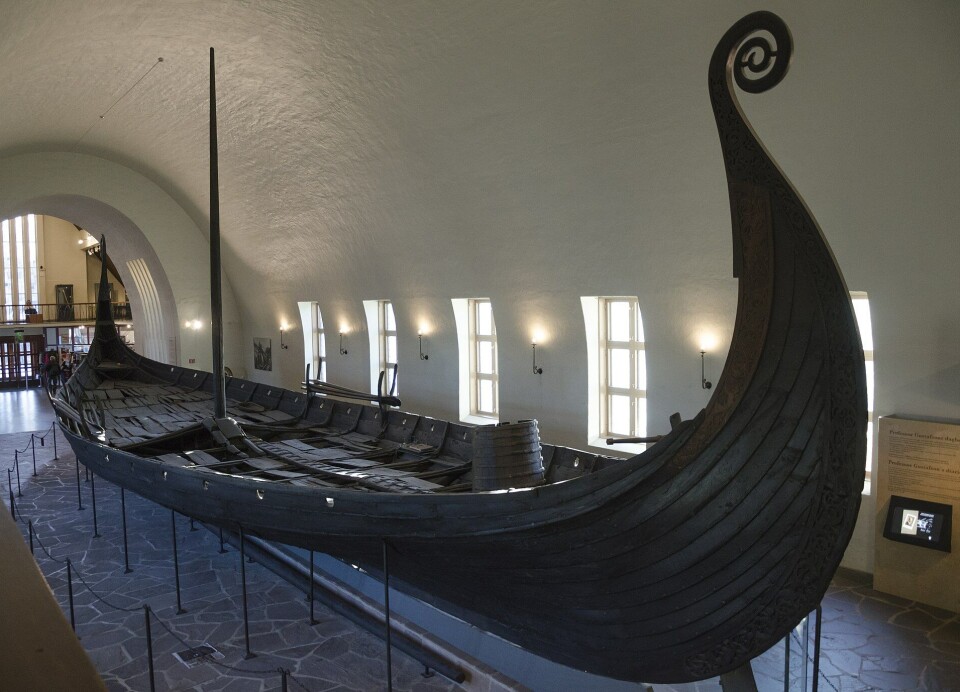
“There are skeleton graves, long barrows, round barrows, stone settings, standing stones. You can see a great variation in graves from the same farm,” she says.
The meaning of all these different burials and rituals is not clear.
“It’s something we don’t understand. It could relate to personal or familial logic, but it eludes our understanding,” she says.
This great diversity in burials can also be seen as a form of storytelling, Jan Bill believes.
He describes the burials as very different, perhaps because they were tied to the person who had died.
“You can see the grave as a way of expressing something about the person who was buried,” he says.
Photo credits:
Oseberg ship during excavation in 1904: Cultural History Museum / CC BY-SA 4.0
How the foredeck looked after excavation: Museum of Cultural History / CC BY-SA 4.0
The boulder and rope with which the Oseberg ship is moored: Museum of Cultural History / CC BY-SA 4.0
Reference:
Brøgger et al. ‘Osebergfundet: Bind 1’ (The Oseberg find: Volume 1), 1917.
———
Translated by Alette Bjordal Gjellesvik
Read the Norwegian version of this article on forskning.no













